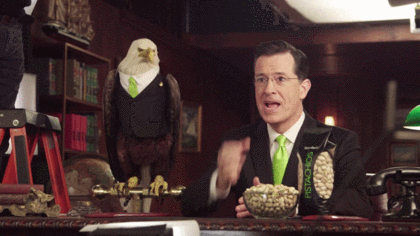BrooklynBulls wrote:I disagree with this line of thinking. The logic is sound, but incomplete. You do not consider the defensive impact of shooting 3-pointers. While it is true that shooting 3's generate offensive rebounds, they also generate long rebounds, and more of them, than do 2 point misses. The effect is an easy transition bucket. While these buckets do not happen at every missed three point opportunity, they are prevalent enough to matter. 2 point shots go in more frequently, meaning that the transition is likely stopped, given sound defense.
What good is it to provide one additional possession, when you have given the opposing team a free two points on the break?
Not only that, but 2 point shots are more likely to draw fouls.
The defensive effect of course does not cancel out the benefit of shooting 3's, but rather mitigates it. The ramifications are that yes, it is better to shoot 3's than long 2's, but it is likely better to shoot close 2's than 3's.
Basically, your argument is flawed in that you do not consider defense or the likelihood of foul shots per type of shot.
I do agree with you that taking two steps back and shooting the 3 is likely a better option that being an 18-foot jump shooter.
Those are all good points. I don't really disagree with any of them. There are definitely some intangible factors where 2-point attempts provide an edge over 3-point attempts.
My only real point is that, all other things being equal, a 33% 3-point shooter gives his team an advantage over a 50% two point shooter. At the starting point of the analysis, you must acknowledge the mathematics of the situation. Then you can study the intangibles to see if the 2-point shooter can make up the difference.
I think you overrate the impact of long rebounds leading to fast breaks. I recall a study somewhere that showed that the marginal increase in fast breaks generated from 3-point misses is negligible.
The strongest argument in favor of 2-pointers is the additional FT's generated and the likely increase in TS% (as well as causing the defense to get into foul trouble). I also think 2-point attempts generally make the defense work a little harder.
On the other hand, having a good 3-point shooting big man has other positive ramifications other than the improved eFG%. Specifically, the floor spacing makes things much easier for teammates. Effectively, a good 3-point shooter helps his team on every possession, even when he doesn't touch the ball. Jamison's incredible on/off differential is a testament to this. A perimeter big man also draws out opposing big men, making it easier for guards to get their shots off in the lane.
There are ten big men in the league who shoot at least .333 from 3-point range and have made more than 50 of them so far this season. Here are their on/off differentials on offense:
bargnani,andrea +3.3
harrington,al +2.6
jamison,antawn +13.8
kleiza,linas +4.6
marion,shawn +3.3 (+1.2 with Miami)
murphy,troy +3.3
nowitzki,dirk +14.4
okur,mehmet +3.8
radmanovic,vladi +8.8
wallace,rasheed +2.1
I just looked this up this myself, and even I'm surprised by the results. It's truly remarkable. In EVERY SINGLE CASE, whenever a big man can shoot 3's with respectable frequency and accuracy, he helps out his team's offense, sometimes dramatically. Nowitzki and Jamison rank 5th and 6th in the league in offensive on/off differential. Radmanovic is 15th.



















